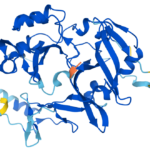Biosecurity 2.0: Enduring threats in the former Soviet Union
By Marina Voronova-Abrams | July 1, 2011
For the past 20 years the international community concentrated its biological nonproliferation programs in the former Soviet Union. As a result, most of the Soviet bio-warfare infrastructure has dissolved; pathogen collections are in secure storage; scientists have engaged in peaceful cooperative research; and local disease surveillance capabilities have improved. Major international donors have recently begun shifting their biological threat reduction efforts to countries in Africa and Southeast Asia to address growing threats of terrorism and disease there. While there are good reasons for a shift in geographical focus, the international community should not ignore the remaining challenges in the former Soviet Union—such as training a new generation of specialists, strengthening personnel policies to prevent “insider” threats, and improving transparency and multilateral communication. With continued support, scientists from the former Soviet countries can make valuable contributions to nonproliferation and public health programs worldwide.
Together, we make the world safer.
The Bulletin elevates expert voices above the noise. But as an independent nonprofit organization, our operations depend on the support of readers like you. Help us continue to deliver quality journalism that holds leaders accountable. Your support of our work at any level is important. In return, we promise our coverage will be understandable, influential, vigilant, solution-oriented, and fair-minded. Together we can make a difference.
Issue: Bulletin of the Atomic Scientists Volume 67 Issue 4
Keywords: Caucasus, Central Asia, Russia, Soviet Union, bio-warfare, biosecurity, emerging diseases, epidemiology, funding, nonproliferation, public health, terrorism, threat reduction
Topics: Biosecurity, Disruptive Technologies, Uncategorized















